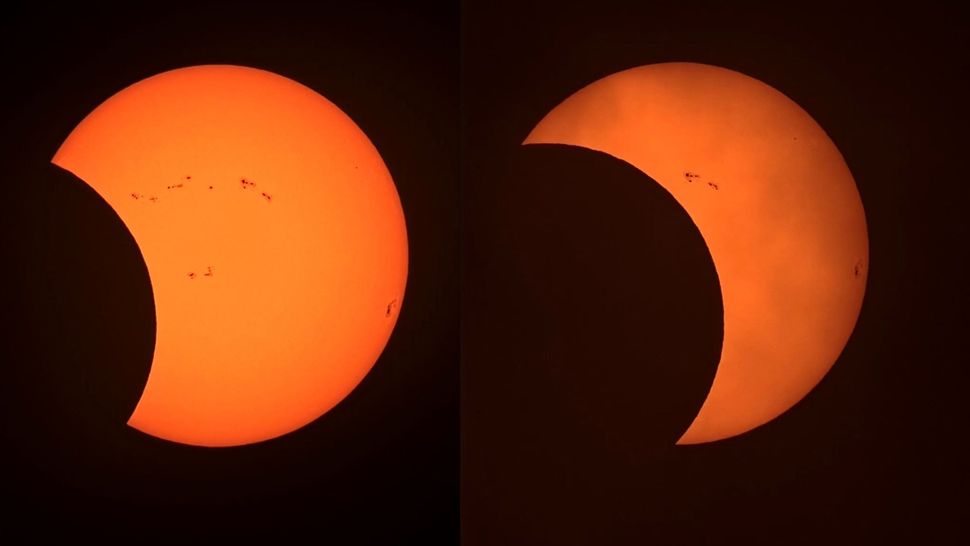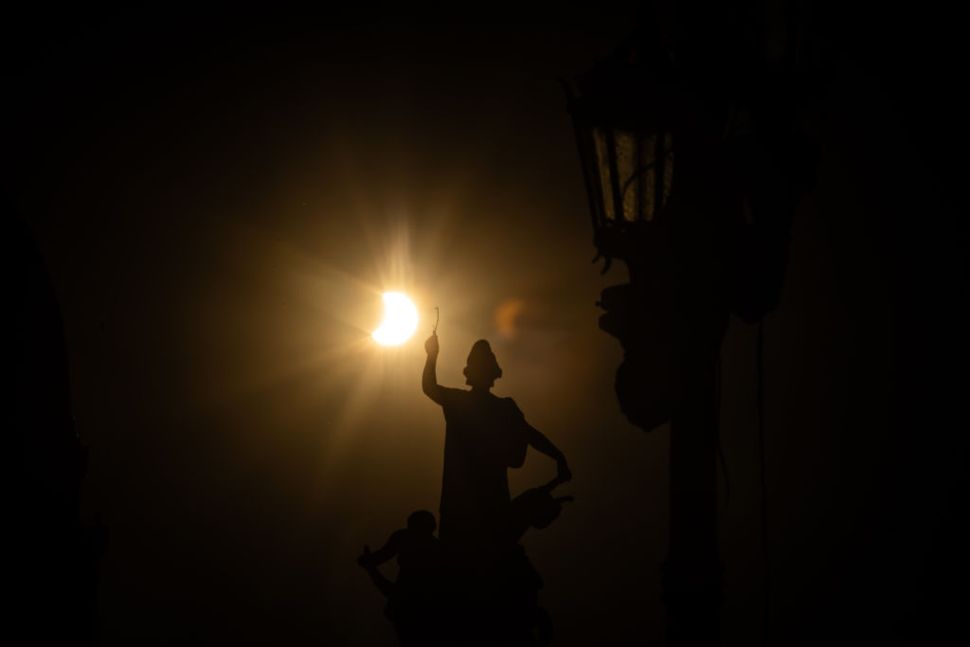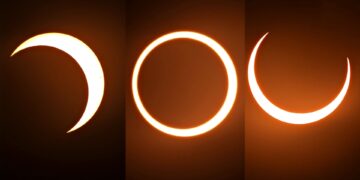On October 2, 2024, a stunning annular solar eclipse, or “ring of fire”, graced Easter Island and parts of Patagonia. The moon, too distant to fully cover the sun, left a bright ring in the sky, captivating locals and tourists. This brief but spectacular event highlighted the beauty and power of cosmic alignment.
What is an Annular Solar Eclipse?
An annular eclipse differs from a total eclipse in one key way: the moon is farther from the Earth during an annular eclipse, making it appear smaller in the sky. As a result, the moon does not completely block out the sun, instead leaving a brilliant ring of sunlight known as the antumbra or more poetically, the “ring of fire”. This occurs because the moon’s orbit around the Earth is elliptical, meaning its distance from our planet varies. When the moon is closer to Earth, it can cover the sun entirely, resulting in a total eclipse. But during an annular eclipse, like the one seen on October 2, the moon is too far away to do so.
The spectacle of an annular eclipse, especially in areas where it is visible in its full glory, is something that draws thousands of skywatchers. The NASA Eclipse website often notes that these types of eclipses are rare and visible only in specific, narrow paths across the globe. In this case, Easter Island was perfectly positioned to witness the event.
The Viewing Experience on Easter Island
Easter Island, known for its iconic Moai statues, became a prime viewing spot for tourists and locals alike. The island’s rich cultural backdrop added to the magic of the event. As the moon passed in front of the sun, people gathered at Tahai, a popular archaeological site on the island, to witness the eclipse. The Rapa Nui community, alongside visitors, celebrated with chanting, music, and awe, as the ring of fire appeared behind the towering Moai.

For many on Easter Island, the event was not just about science but also cultural connection. “The ring of fire is a once-in-a-lifetime experience,” said Rocio Garcia, a tourist, highlighting the special significance of seeing such an event in a place like Rapa Nui, where ancient statues seemed to gaze up at the sky as if sharing in the awe of the moment. The combination of the island’s mystique, the eclipse, and the shared enthusiasm of the crowd made for an unforgettable experience .
The Path of the Eclipse
Although Easter Island provided one of the most picturesque locations for viewing the eclipse, other regions also had a front-row seat. The eclipse was visible in its annular form from parts of southern Chile and Argentina, where residents gathered to observe the celestial event. In Las Horquetas, Argentina, locals expressed their excitement at seeing the ring of fire for the first time. Esteban Sanchez, a resident, remarked, “This is the first time I’ve seen that, and it was really good,” echoing the sentiment shared by thousands across the path of annularity .

This event was not limited to these specific areas, though. People in the southern half of South America, parts of Antarctica, and even some areas in Hawaii were treated to a partial eclipse, where the moon only partially obscured the sun. While these regions did not experience the full ring of fire, the partial eclipse still provided a dazzling display that encouraged skywatchers to don their protective eyewear and turn their eyes upward.
The Science and Rarity of the Event
Annular solar eclipses are relatively rare, occurring when the alignment of the Earth, moon, and sun is just right. Because the moon’s orbit is not perfectly circular, there are moments when the moon is farther away from Earth during an eclipse, leading to the ring of fire effect instead of a total eclipse. These events are rarer than total eclipses, and they tend to cover a much smaller path of visibility.
For scientists, eclipses are more than just visual spectacles; they offer a chance to study the sun’s outer atmosphere, or corona, and other solar phenomena that are otherwise difficult to observe. The brief blocking of the sun allows researchers to capture data on solar radiation, the behavior of solar flares, and the impact of the eclipse on the Earth’s atmosphere.

Astronomers often use specialized instruments like spectrometers and coronagraphs to study these events in detail. NASA and other space agencies closely monitor eclipses because of the opportunities they provide to gain insights into the sun’s dynamics. The alignment required for an annular eclipse is particularly fascinating because of how it demonstrates the delicate balance of celestial mechanics at work.
Why Eclipses Matter to Us
Beyond their scientific value, solar eclipses hold a special place in human culture and history. Since ancient times, eclipses have been seen as omens or divine messages. While we now understand the mechanics behind them, they continue to evoke a sense of wonder and connection to the cosmos. The October 2024 eclipse on Easter Island was a testament to how such events bring people together, whether they are scientists, tourists, or local residents.
For many, it was a moment of reflection—reminding us that we are part of a larger universe, where even celestial bodies align in a way that captivates and inspires. The combination of culture, nature, and astronomy creates a shared experience that transcends borders and backgrounds.

The ring of fire effect, in particular, has a way of capturing the imagination. Its striking appearance—an ethereal circle of light surrounding the dark moon—is a stark reminder of the interplay between light and shadow, distance and alignment. This phenomenon, visible for just a few minutes, serves as a fleeting yet powerful reminder of the beauty of the universe.
Conclusion: A Once-in-a-Lifetime Event
The October 2024 annular solar eclipse was more than just a scientific event—it was a moment of awe, wonder, and cultural significance. Whether viewed from the mystical Easter Island, the remote reaches of Patagonia, or even parts of Hawaii and Antarctica, the eclipse brought people together in celebration of a rare cosmic alignment.
The scientific importance of eclipses cannot be understated, but their emotional and cultural impact is equally profound. As we continue to study the universe and our place in it, events like this remind us of the beauty and mystery that exist beyond our daily lives. The next time the moon passes between the Earth and the sun, blocking out its light and leaving only a glowing ring, people will again gather to marvel at the cosmic dance that unites us all.
This was a “ring of fire” for the ages, one that many will remember for the rest of their lives, and one that reminds us of the incredible forces at work in the universe.



















